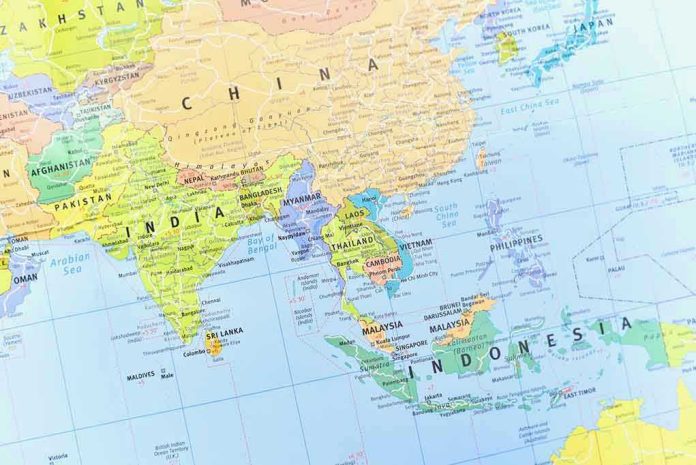
Nepal’s sweeping ban on social media—lifted only after protests left 19 dead—shows what happens when government overreach collides with the digital rights of a rising generation, and why Americans must remain vigilant against any policy threatening freedom of speech or assembly.
Story Snapshot
- Nepal’s government banned 26 major social media platforms, sparking violent protests and 19 deaths.
- Gen Z activists mobilized en masse, forcing the government to reverse the ban and announce an investigation.
- The crisis highlights the centrality of digital platforms in modern activism and the dangers of government overreach.
- International scrutiny and generational divides now shape Nepal’s debate over digital freedom and state control.
Government-Imposed Social Media Ban Triggers Deadly Unrest
Nepal’s government imposed a sweeping ban on 26 social media platforms—including Facebook, Instagram, WhatsApp, and YouTube—after these companies failed to register with the Ministry of Communication and Information Technology, as mandated by the Supreme Court. The ban, enforced on September 4, 2025, immediately sparked nationwide outrage. Gen Z activists, students, and everyday citizens who rely on these platforms for activism, business, and daily communication took to the streets. Violent clashes erupted over several days, resulting in 19 deaths and hundreds injured, underscoring the volatility that can result from abrupt restrictions on fundamental digital freedoms.
Government officials justified the ban by citing a need to control misinformation, fraud, and maintain social harmony. However, the policy quickly backfired. Viral social media content—ironically, the very tool being restricted—had already fueled public frustration over corruption, nepotism, and the visible wealth gap between political elites and ordinary citizens. The generational divide became especially pronounced, as younger Nepalis saw the crackdown as a direct attack on their rights to communicate and organize. International organizations such as Amnesty International and the United Nations condemned the violence and called for a transparent investigation into the deaths. The Home Affairs Minister resigned as public pressure mounted, and the government’s attempt to silence dissent ultimately proved unsustainable.
Youth Activism Forces Policy Reversal and Launches Global Debate
Facing overwhelming resistance, the Nepalese government lifted the ban on September 9, 2025, and announced a probe into the protest violence. The move was seen as a significant victory for youth activists and a recognition of the critical role that digital platforms play in modern society. Businesses and individuals who depend on these platforms for marketing, sales, and communication experienced immediate relief. The episode triggered an ongoing national and international debate about the proper balance between government oversight and digital rights. Major tech companies, including Meta and YouTube, now face new questions about compliance and engagement with foreign governments that may seek to exert excessive control over online speech and organizing.
For American conservatives, this episode offers a stark warning. When government expands its regulatory reach under the guise of “public order” or “social harmony,” the result can be the erosion of fundamental liberties—speech, assembly, and the right to dissent. The rapid mobilization of Nepal’s youth demonstrates the potential power of grassroots activism, but also the risks of unchecked state power. The Nepalese crisis is a reminder that policies threatening digital freedoms abroad can set troubling precedents and should be watched closely by those who value constitutional rights at home.
Political Fallout and Long-Term Implications for Digital Freedom
The aftermath of Nepal’s crisis is still unfolding. An official investigation into the deadly crackdown is underway, but the episode has already reshaped the country’s political landscape. The resignation of the Home Affairs Minister and ongoing scrutiny of government actions have increased demands for transparency and accountability. Social polarization remains high, with Gen Z activists now more engaged and emboldened than ever. Internationally, the situation has drawn attention to the challenges faced by tech companies navigating local regulations and the potential for similar overreach in other countries. Experts warn that the precedent set in Nepal could encourage further attempts by governments to restrict digital rights, particularly in regions marked by political instability or generational divides.
Nepal lifts ban on social media platforms after protests where police killed 19 people https://t.co/gEtP078Pfa #OODA
— OODA (@ooda) September 9, 2025
While Nepal’s ban was reversed, the debate over digital rights, government authority, and the role of social media in modern society is far from settled. For Americans who cherish the Constitution, especially the First Amendment, Nepal’s experience underscores the need for constant vigilance against government overreach—whether in the name of regulation, safety, or social order. The lesson is clear: when governments move to control the digital public square, the stakes for freedom and democracy are always high.
Sources:
Nepal’s Gen Z Protests: Social Media, Nepo Kids, and Corruption Explained – TIME














